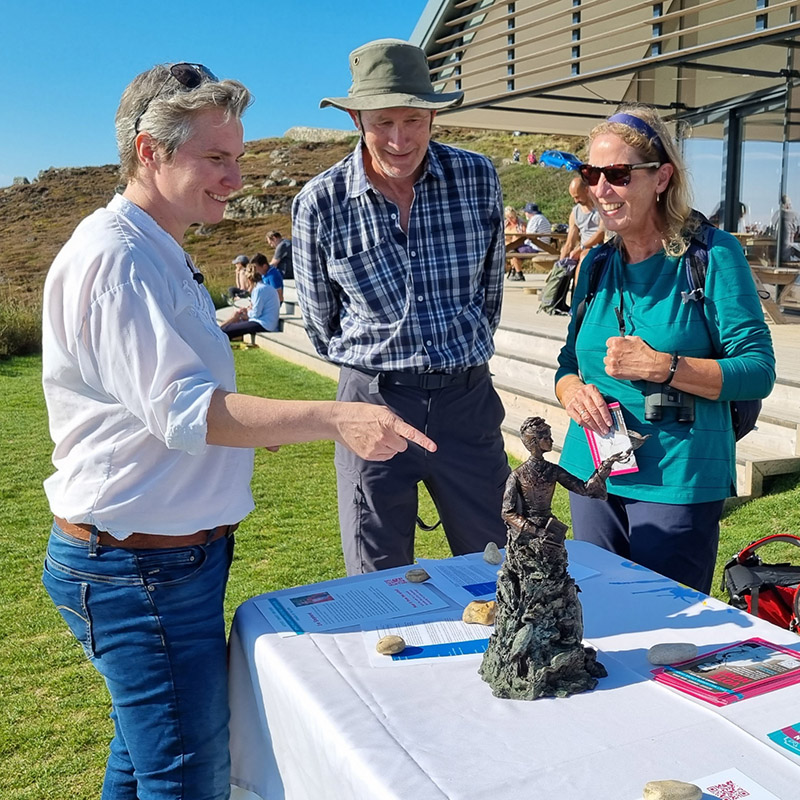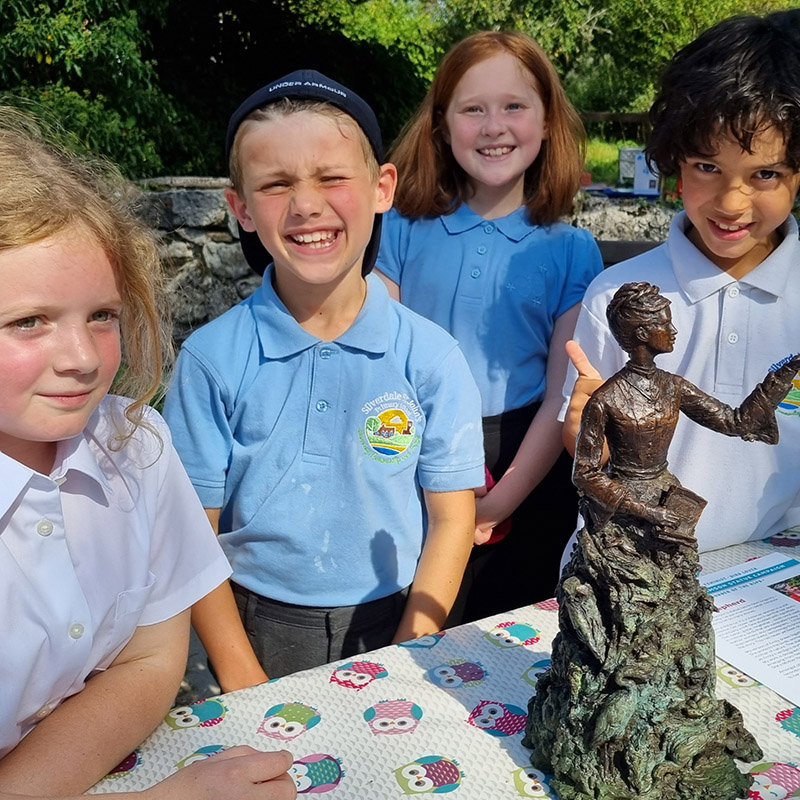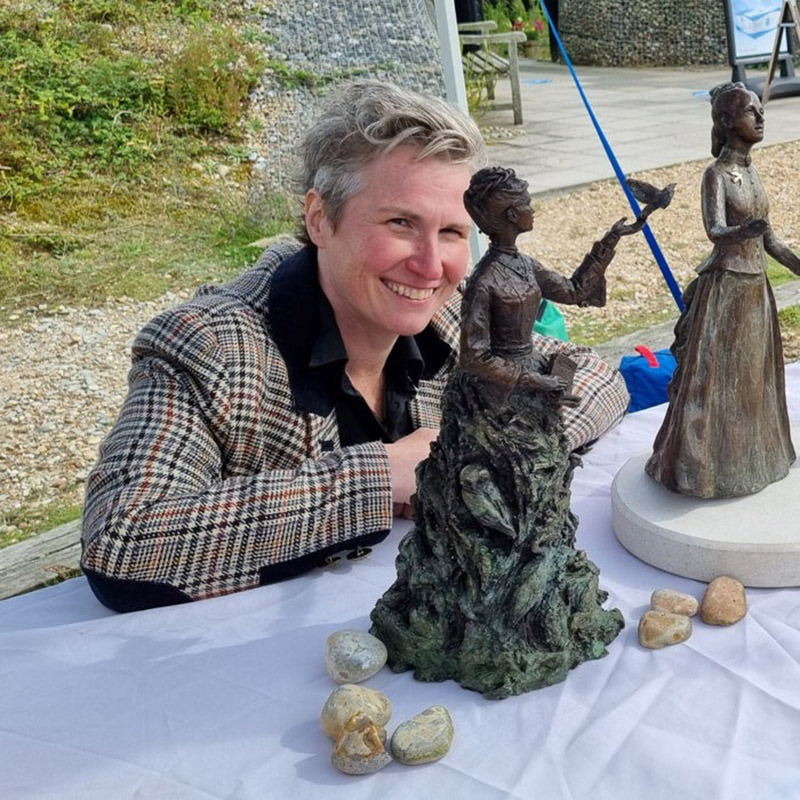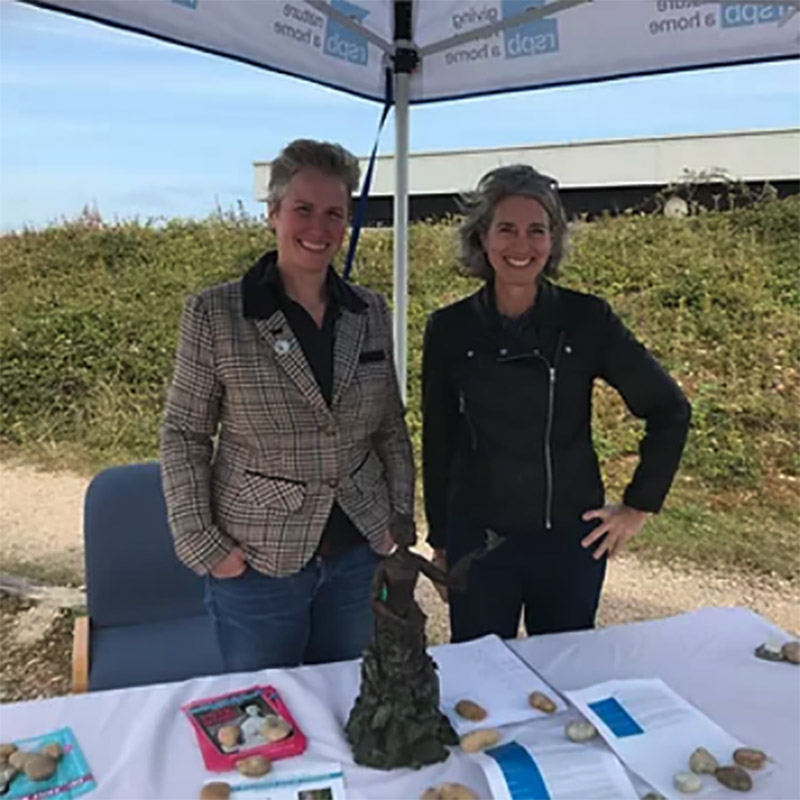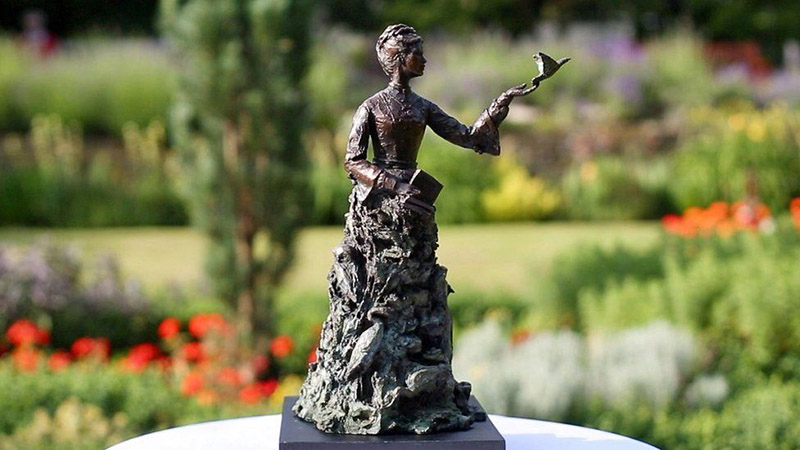About the statue – Eve Shepherd
Emily Williamson was a forward-thinking, kindly and truly inspirational woman – but I see this statue as also celebrating woman-kind and animal-kind as a whole. I’m known for taking on challenging projects and giving a voice to those people and causes that often lie hidden or have been silenced throughout history.
Here, Emily Williamson is freeing a bird from her hand. Her stance is strong yet gentle, her expression and the tilt of her head show kindness yet stoic qualities. As the viewer’s eye travels down the figure, the lower section of the piece acknowledges the environmental and social aspects of Emily’s work.
From a distance her skirt will look like an ordinary crinoline dress with a bustle, but close up it’s an organic cliff face; a nesting ground depiction of the birds she worked so hard to save from the plumage trade. These birds will be lifelike and miniature, nesting within the folds of the dress as if in their natural environments. Can you spot, for example, an owl, kingfisher, snowy egret, penguin and a fledgling?
Also hidden within her dress/landscape are small scenes/dioramas depicting other women relevant to her story – for example Eliza Philips, Etta Lemon and the Duchess of Portland, who, together with Emily Williamson, built the early RSPB.
Puffin
These birds are currently on the RSPB most endangered RED list.
Snowy Egret
Hunted to the brink of extinction for its plume and saved by the RSPB
Albatross
This bird is very important in the sculpture.
- a) The Albatross is currently in the RSPB’s RED list of endangered birds. Today, the RSPB Albatross Task Force is trying to save this beautiful creature.
- b) They were also used in the millinery industry.
- c) I selected this bird as it is one of my favourites and because of the poem ‘The Rime of the Ancient Mariner’ by Samuel L Coleridge. In the poem one mariners thoughtless act of killing an albatross on board a drifting ship brought death to his crewmates. I wonder if this could be a lesson in our current climate crisis?
Avocet
The Avocet is the champion of the RSPB conservation effort and the bird now used on the RSPB’s logo. This incredible bird was once extinct in the UK, but through RSPB conservation programs have brought the bird back and is now reaching record numbers.
Tawny Owl
These birds are currently on the RSPB most Amber list.
Yellow-Eyed Penguin
These birds are currently very endangered, their numbers are declining due to the (by catch) from the fishing industry.
Great-crested Grebe
This bird is one of Emily’s favourite birds and was fundamental to the formation of the RSPB, she saw how the birds were depleting rapidly in numbers. Hunted to the brink of extinction for the millinery industry they are now in the Green (safe) status within current conservation listings.
Kingfisher
Can you spot the kingfisher, its one of the hardest to spot in the sculpture! Kingfishers were a favourite in the millinery industry and today is on the RSPB’s Amber list.
Other birds to spot
What other birds can you spot in the sculpture? There are more important birds which I’ve included in this sculpture, they were either used in the millinery industry or are being helped by the RSPB today.
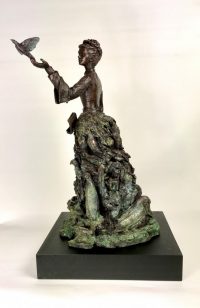 Bird on Emily’s Hand
Bird on Emily’s Hand
This birds ‘form’ is based on a starling, this nods a cap to Mellissa, Emily’s great, great niece who, even though she didn’t know of her Auntie Emily’s incredible achievements as founder of the RSPB, chose to study starlings for a living.
This bird is very important it shows Emily releasing the bird into the wild, as Emily in her life and her legacy protected all birds, this bird is made up of lots of birds, like a murmuration.
Diorama 1 – Nurse and child
Emily cared a lot about people as well as birds, she founded the Princess Christian Training College for Nurses. Here Emily introduced using real children in their training instead of dolls. The sculpture shows a nurse helping a small child.
Diorama 2 – Feather workers
The feather trade was known for its cruel use of female labourers, girls as young as 5 were worked for long hours often using toxic chemicals to produce the plumes for hats. Emily also founded the Gentle Women’s Employment Association.
Emily’s Locket
Too small on the sculpture to make, but Emily’s locket will show the other 2 founders of the RSPB, Etta Lemon and Eliza Philips, these are incredible women in their own right, not taking ‘no’ for an answer!
Plumage Act 1921
Emily is holding the Plumage Act in her hand.
The RSPB
Managed on the 1st July 1921 to get their Plumage Act agreed in the House of Parliament, this meant that feather and bird skins were not allowed to be imported into the UK, thereby rendering the use of feathers in fashion obsolete.
Emily’s Skirt / The birds habitats
Emily’s dress shows the various habitats which birds live in. Healthy, unpolluted environments are important for animals and birds to live happy, healthy lives. The RSPB helps to make and maintain good habitats. How many different bird habitats can you find in the sculpture?
Emily’s pose and expression
Emily has been described as quietly dignified and determined. I thought that she must also have been a very strong and caring person. These are the personality traits Emily would have needed to create such an important organisation in the ‘man’s world’ she lived in.


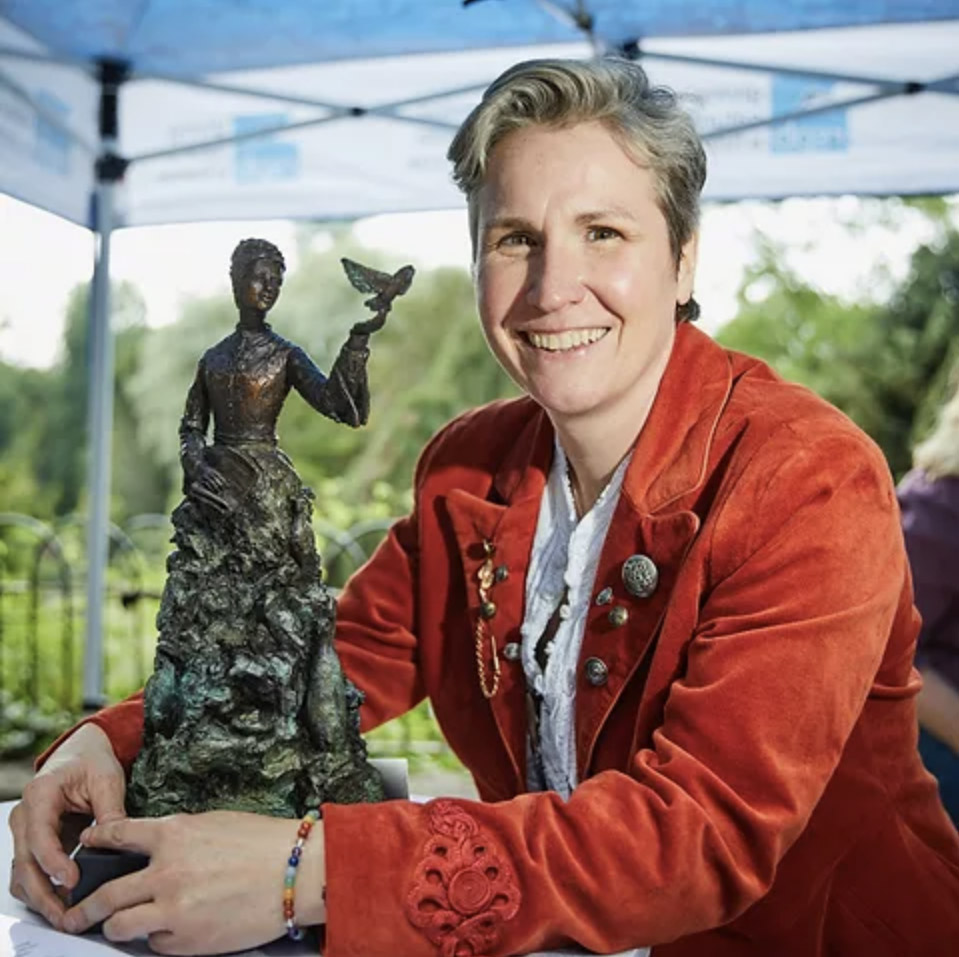
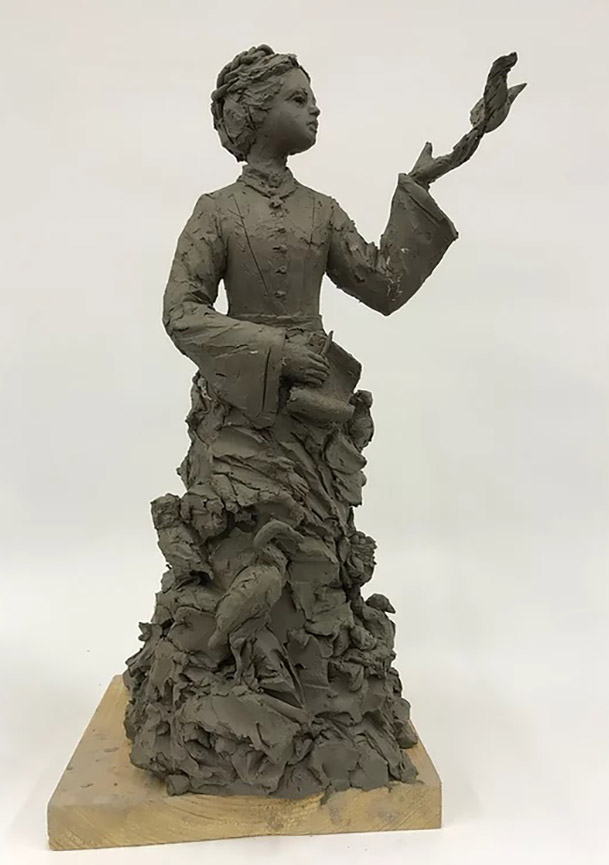
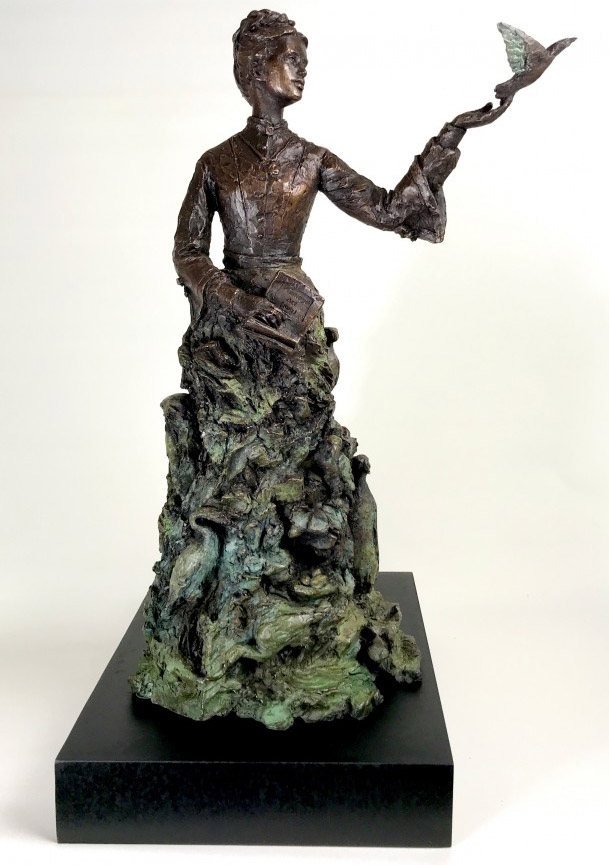
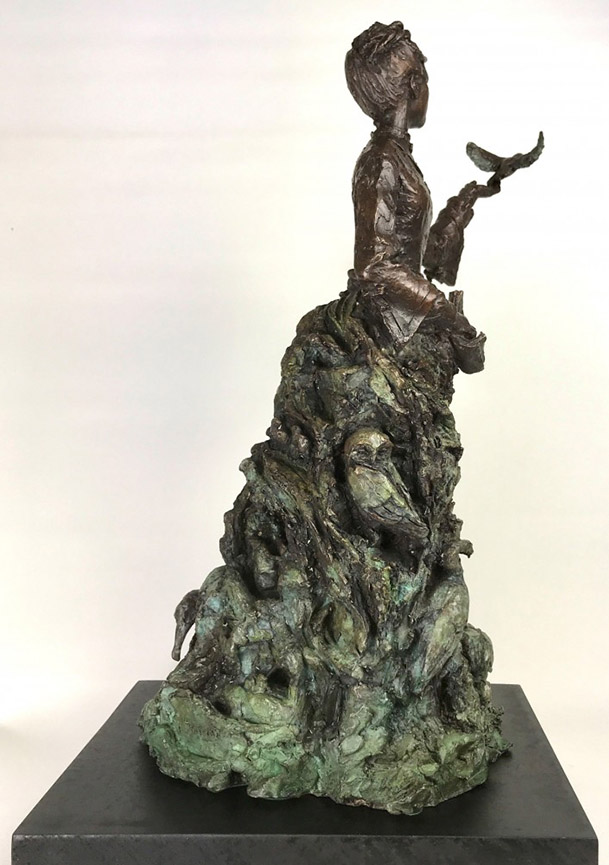
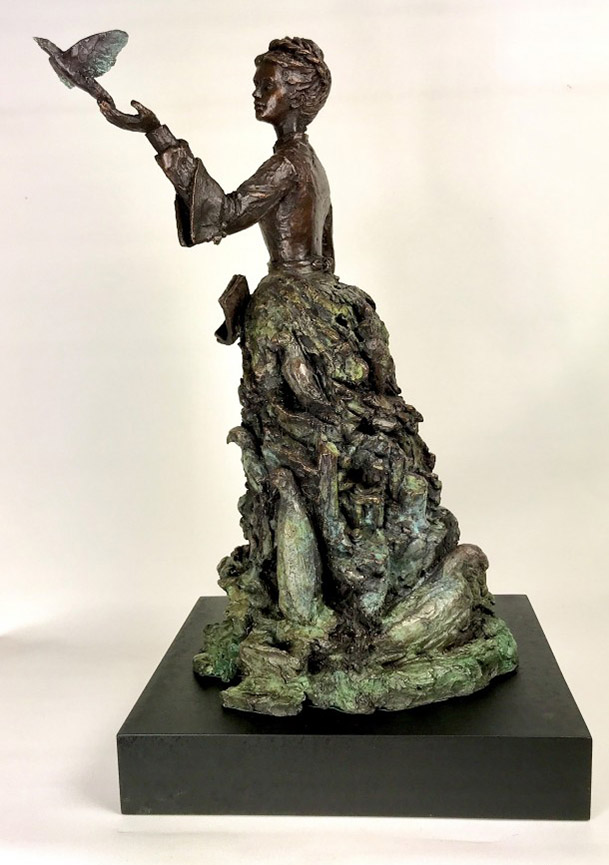
 Bird on Emily’s Hand
Bird on Emily’s Hand